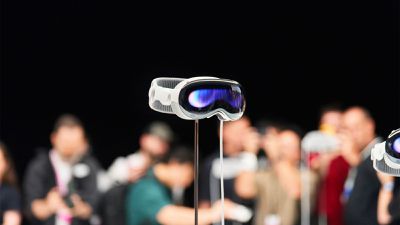Technology has become an integral part of the sports world, transforming how athletes train, how coaches strategize, and how fans enjoy their favorite games. The term sports technology refers to the application of scientific knowledge, digital tools, and innovative equipment designed to enhance athletic performance and the overall sports experience.
Looking back through history, technology in sports has always played a role in enhancing results. From the invention of the stopwatch to measure runners’ speed to the introduction of photo finishes in racing events, technological advancements have continually pushed the boundaries of what is possible in sports.
The focus of sports technology is twofold:
– Improving performance: Athletes and coaches use technology to analyze performance, refine techniques, and gain a competitive edge. This includes everything from wearable devices that track physical activity to video analysis software that helps in strategizing.
– Enhancing experience: For fans, technology has revolutionized the way they watch and interact with sports. High-definition broadcasts, instant replays, and virtual reality experiences are just a few examples of how technology has enriched the spectator experience.
The impact of technology on the sports industry is profound and multifaceted. It affects various stakeholders, including:
– Athletes, who can train smarter and reduce the risk of injury with the help of technology.
– Coaches, who can make more informed decisions based on data analytics and real-time information.
– Fans, who enjoy a more immersive and interactive viewing experience.
– The sports industry as a whole, which has seen significant growth and innovation thanks to technological advancements.
Technology Enhancing Athletic Performance
The world of sports is constantly evolving, and technology plays a pivotal role in pushing the boundaries of athletic performance. From the gear athletes wear to the way they train and recover, technological advancements are making a significant impact.
Wearable Technology
Wearable technology has become a game-changer in monitoring and enhancing athletic performance. Here’s how:
– Fitness trackers and smartwatches help athletes track their workouts, monitor their heart rates, and analyze sleep patterns.
– Biometric sensors provide real-time data on performance, allowing for immediate adjustments to training regimens.
– Devices focused on injury prevention and recovery are crucial for maintaining an athlete’s health and ensuring longevity in their sport.
Here are some other articles you may find of interest on the subject of wearable technology :
Data Analytics and Performance Analysis
The use of data analytics is revolutionizing how athletes and coaches approach training and competition:
– Video analysis software breaks down movements and techniques to improve skills and strategy.
– Advanced statistics and predictive modeling offer insights into performance trends and potential outcomes.
– Teams and coaches utilize big data to refine team strategies and enhance player development.
Equipment and Apparel Innovations
Technological advancements in equipment and apparel are providing athletes with an edge:
– Smart equipment, such as balls, rackets, and bats, are embedded with sensors to provide feedback on performance.
– High-tech footwear and clothing improve comfort, enhance performance, and reduce the risk of injury.
– Customization and personalization through technology ensure that gear meets the specific needs of each athlete.
Training Enhancements and Simulation
Training methods have seen a significant transformation with the introduction of immersive technologies:
– Virtual reality (VR) and augmented reality (AR) are used in training to simulate real-game scenarios and improve decision-making skills.
– High-performance training facilities are equipped with state-of-the-art equipment to maximize athletic potential.
– Simulation technologies aid in developing strategies and honing skills without the physical wear and tear of traditional practice.
Nutritional and Medical Advancements
Athletes’ health and nutrition are critical to their performance, and technology is playing a role in personalizing care:
– AI-driven personalized nutrition plans ensure that athletes receive the optimal fuel for their bodies.
– Technological advancements in sports medicine are enhancing injury treatment and prevention.
– Wearable health monitoring devices keep track of vital signs and alert athletes to potential health issues before they become serious problems.
Technology in sports is an invaluable ally in the quest for peak athletic performance. It empowers athletes to train smarter, recover faster, and perform at their best, ultimately pushing the limits of what’s possible in sports.
Improving the Sports Experience with Technology
The integration of technology into sports has revolutionized the way fans interact with their favorite teams and athletes, as well as how games are played and experienced. From the roar of the crowd in a smart stadium to the immersive virtual reality at home, technology is enhancing every aspect of the sports experience.
Fan Engagement and Interaction
Social media and digital platforms have become essential tools for fan engagement, allowing supporters to connect with teams and players directly. Fans can now share their passion in real-time, creating a global community of like-minded individuals. Interactive fan experiences at stadiums and arenas are also on the rise. These include:
– In-seat ordering of food and merchandise
– Instant replays and stats on demand
– Interactive games and contests during breaks
For at-home fans, augmented and virtual reality technologies offer a new dimension of engagement, providing immersive experiences that make them feel like they’re part of the action, even from their living rooms.
Broadcasting and Media Technologies
The quality of sports broadcasts has dramatically improved with the advent of high-definition and ultra-high-definition technologies, bringing crystal-clear images to screens worldwide. Multi-angle and player-perspective camera technologies give viewers a more personalized experience, allowing them to see the game from new vantage points.
Streaming services and on-demand sports content have also become popular, ensuring fans never miss a moment and can watch their favorite events at their convenience.
Stadium and Venue Technology
Smart stadiums are at the forefront of venue technology, with infrastructure improvements that enhance the spectator experience. These stadiums are equipped with:
– High-speed internet access
– Energy-efficient lighting and climate control
– Interactive seating maps and wayfinding
Enhanced security and crowd management systems ensure a safe environment for fans, while mobile apps for in-stadium services provide convenience, from ticket purchasing to locating amenities.
E-sports and the Digital Expansion of Sports
The rise of e-sports has brought a new dimension to the sports industry, with its own set of technological demands. The integration of traditional sports with e-sports platforms is blurring the lines between physical and digital competition.
The future of sports in a digital and interconnected world promises even more integration, with traditional sports leveraging e-sports’ popularity to reach new audiences.
Ethical Considerations and the Future of Sports Technology
As technology in sports advances, it’s crucial to balance it with the human element of sports. Concerns over fairness and accessibility must be addressed to ensure that technology enhances the game without detracting from its integrity. Anticipating future trends is also essential, as emerging technologies like AI and biometrics could further change the landscape of sports. Technology in sports is a double-edged sword, offering incredible benefits but also presenting new challenges. As we look towards the future, the sports industry must navigate these waters carefully, ensuring that the spirit of competition remains at the heart of the game.
Filed Under: Guides, Top News
Latest togetherbe Deals
Disclosure: Some of our articles include affiliate links. If you buy something through one of these links, togetherbe may earn an affiliate commission. Learn about our Disclosure Policy.






